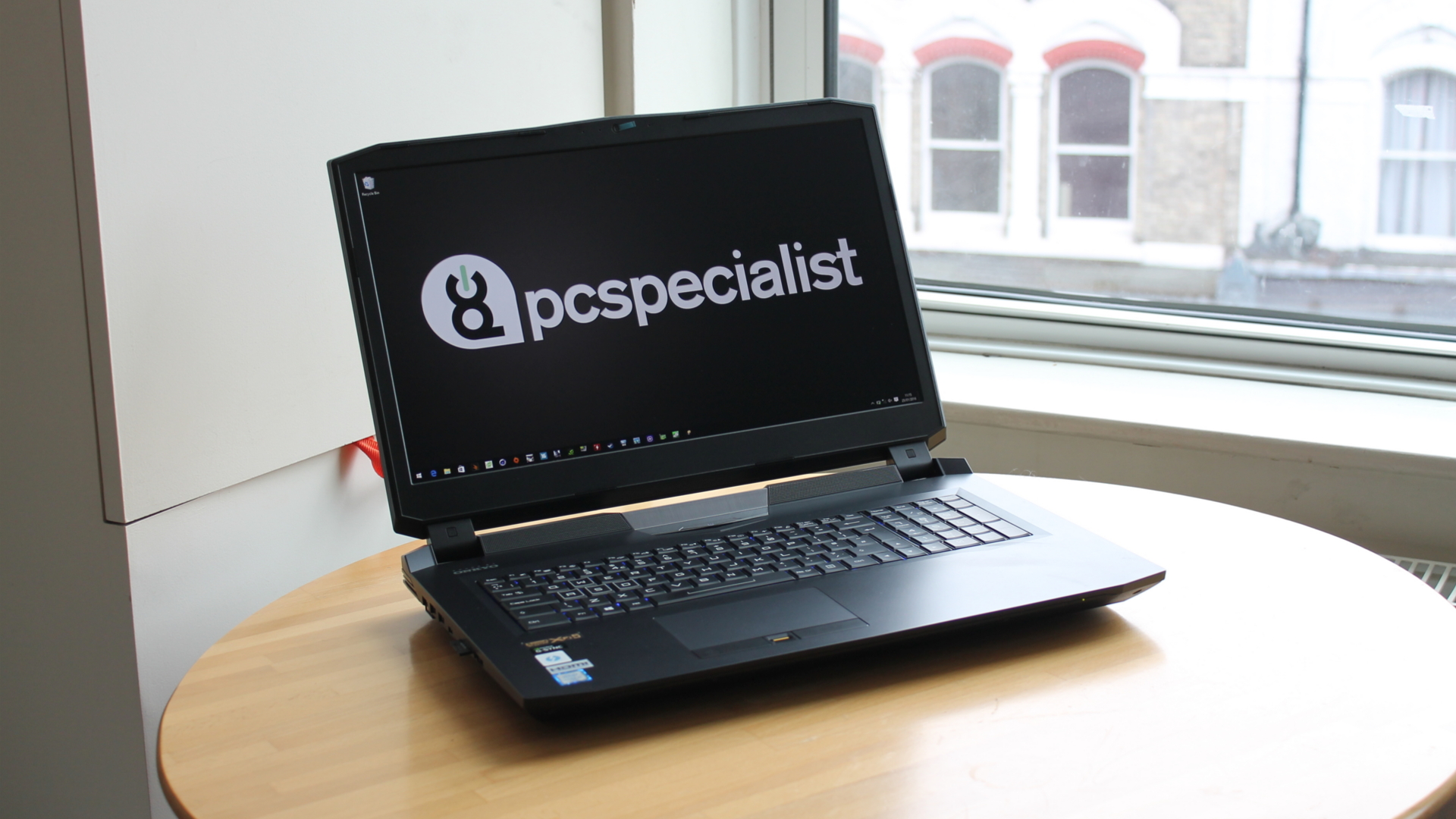Why you can trust TechRadar
If the Octane II was a Team Fortress 2 character, it would be the Heavy. It packs plenty of muscle, weighs a ton and would probably gobble up 10 "sandviches" an hour if it had a mouth. It's the chunkiest of our three laptops compared, but only by a whisker.
Measuring 41.8 x 29.53 x 4.9cm (W x D x H – or 16.4 x 11.6 x 1.92 inches), the Octane has roughly the same footprint as the MSI GT72, which also sports a Clevo chassis and measures 42.8 x 29.4 x 4.8cm (16.8 x 11.5 x 1.8 inches). The Alienware 17 is a little longer than both of those machines but is noticeably thinner, measuring 43 x 29.1 x 3.4cm (16.93 x 11.49 x 1.35 inches).

When it comes to weight, the Octane is the greatest machine in need of a diet out of the three. It tips the scales at a massive 3.9kg (8.59 pounds), whereas the GT72 and Alienware 17 both weigh a slightly more palatable 3.78kg (8.33 pounds).

It's unlikely that you would notice the difference in weight between the three machines, which all require a strong and suitably-sized backpack for transportation. Lifting the Octane II is strictly a two-hand job, as picking it up one-handed not only runs the risk of injury, it leaves you open to dropping and smashing it on the floor.
Spec sheet
Here is the configuration of the Octane II Pro sample provided to techradar for review:
- CPU: 4.0GHz Intel Core-i7-6700K (quad-core, 8MB cache, Turbo Boost up to 4.20GHz)
- Graphics: Nvidia GeForce GTX 980 Desktop Edition – (8GB DDR5, DX12, G-Sync)
- RAM: 16GB Kingston HyperX Impact DDR4 (2,133MHz, 2 x 8GB SODIMM)
- Screen: Octane Series 17.3-inch, matte Full HD IPS LED widescreen (1,920 x 1080)
- Storage: 1TB Serial ATA II 2.5-inch HDD (5,400rpm, 8MB cache), 512GB Samsung SM951 M.2 (PCIe NVMe, up to 2,150MB/R, 1550MB/W)
- Ports: 4 x USB 3.0 ports, 1 x USB 3.1 port with Thunderbolt, HDMI-out, 1 x eSATA/USB 3.0 combo port, 2 x DisplayPort 1.2, mic-in, headphone-out, 1 x RJ-45 Ethernet, 1 x S/PDIF-out, Kensington lock slot
- Communications: Gigabit LAN and Wireless Intel AC-8260 M.S, Bluetooth
- Camera: Integrated 2.0MP Full HD webcam
- Weight: 3.78kg (8.33 pounds)
- Size (W x D x H): 41.8 x 29.53 x 4.9cm (16.4 x 11.6 x 1.92 inches)
You're stuck with the Octane II's chassis whether you like it or not, but the enormous amount of configuration options on the inside goes some way toward making up for that. Puzzlingly, it's only available with a 1,920 x 1,080-pixel display.

Laptops with 4K displays have a history of being underpowered and unable to do games justice played at Ultra HD resolution, so it's ironic that the 4K-capable Octane II tops out with a Full HD panel. On the plus side, it's a move that helps keep the total cost down and frame rates up.
Sign up for breaking news, reviews, opinion, top tech deals, and more.
Our review sample came with an Intel Core i7-6700K chip – currently Intel's top-of-the-line desktop processor. It can be swapped out for a weaker Intel Core i5 processor to lower the price, and the amount of RAM can be reduced from 16GB to 8GB.

Storage options are equally flexible. There is the choice to add a second hard disk (HDD) or solid-state drive (SSD), ranging from a 500GB spinning HDD all the way up to a 960GB Kingston HyperX Savage SSD. You can't choose to have an internal DVD or Blu-Ray drive installed, but an external one can be sent along with the machine for an additional cost.

Around the back is a power port that only accepts the power lead if it's facing upwards. It's positioned alongside an HDMI-out port, and two DisplayPort connections. On the left-hand side is a sole USB 3.1 port (at least two would have been nice), alongside a headphone port, microphone port, line-in and a Kensington security lock.
Along the right-hand edge is a LAN port, two USB 3.0 ports, a Thunderbolt (USB 3.1) port, an SD card reader and an e-SATA connection. Overall, there are plenty of ports for hooking up peripherals and data transfer, even if they're not located in the best places.
Current page: Specifications and features
Prev Page Introduction and design Next Page Performance and benchmarks
